Bead head spiders
{{start}}
An important part of my bead head fly box. I am a firm believer that when fishing rivers you have to get down to where the fish are holding and also that flies particularly in faster running water should include “hot spots”. These flies satisfy both these requirements. I tend to use my bead head spiders as anchor flies and to fish one or two less weighted or even unweighted flies below it.
{{end}}
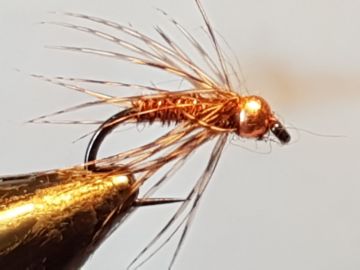
{{+1}}Pheasant tail and partridge TBH spider{{-1}}
{{start}}
If you were to suggest to a North Country (UK) fly fisher that there is such a thing as a tungsten bead head spider they would think your a rod section short of a fly rod.{{end}}

{{+1}}Hybrid spider nymph – Chatto’s original{{-1}}
{{start}}
This is more a class of flies rather than just one fly and is a hybrid of a spider fly and a bead head nymph with a tungsten bead up front. I carry 4 different hybrid spider nymphs in two sizes and find them particularly useful in situations where I need a bit of weight to get a fly down yet still want the anchor fly to fish well and be enticing to trout rather than just being an anchor for other flies in the team.{{end}}
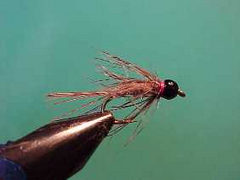
{{+1}}TBH hybrid caddis spider{{-1}}
{{start}}
This is my favourite hybrid of a spider fly and a bead head nymph with a tungsten bead up front. I carry this fly in two sizes and find them particularly useful in situations where I need a bit of weight to get a fly down yet still want the anchor fly to fish well and be enticing to trout rather than just being an anchor for other flies in the team. This is a great buggy looking fly and the tail and soft hackle provide plenty of movement.{{end}}
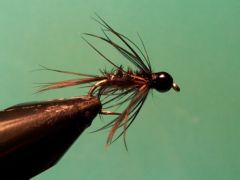
{{+1}}TBH brown and peacock hybrid spider{{-1}}
{{start}}
Brown and peacock hybrid spider nymphs are good buggy looking flies and the tail and soft hackle provide plenty of movement. One of these hybrid spider nymphs on the top dropper and two unweighted spiders or nymphs below can be a real tease for trout.{{end}}
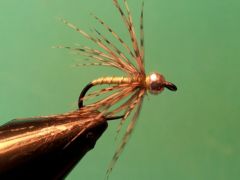
{{+1}}Tungsten bead head chartreuse and partridge spider{{-1}}
{{start}}
Bead head spiders fish very well in conjunction with traditional spider flies and give you the opportunity of adding a bit of flash to your team and more importantly get your team down a little. The benefit of that of course is that the added depth gives a little more vertical travel to your team of flies as they swing round at the end of the drift and start to lift, which as we all know is when the majority of hits occur when swinging spiders.{{end}}

{{+1}}Tungsten bead head orange and partridge spider{{-1}}
{{start}}
I nearly always fish my bead head spiders on the point in a team of two flies and with a relatively heavily weighted nymph such as a TBH duracell jig nymph, TBH collared hare and copper or TBH chocolate caddis nymph on the top dropper on the dropper 60 or 70 centimetres up the leader.{{end}}
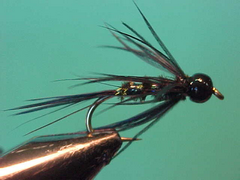
{{+1}}TBH dark magic – Chatto’s original{{-1}}
{{start}}
Hybrid spider nymphs are good buggy looking flies and the tail and soft hackle provide plenty of movement. One of these hybrid spider nymphs on the top dropper and two unweighted spiders or nymphs below can be a real tease for trout.{{end}}
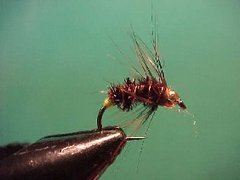
{{+1}}Hot butt spider – Chatto’s tie{{-1}}
{{start}}
Bead Head spider type flies are amongst the best flies for fishing fast rivers and streams. They are suggestive little flies and the combination of buggy shape, the peacock herl body, the movement of the soft hackle and the trigger of the hot butt often produce a hit. This mid water fly is suggestive of a drowned beetle. I tie the hot but in both fluoro fire orange and chartreuse as I find they are the best two trigger colours for trout. The orange works best either end of the river season and chartreuse comes into its own during the middle of the season when cased caddis are more prevalent.{{end}}

{{+1}}TBH thread spiders{{-1}}
{{start}}
Bead Head thread spider type flies are amongst the best flies for fishing fast rivers and streams. They are suggestive little flies and the combination of buggy shape, the movement of the soft hackle often produce a hit. There is also the added benefit that they are so easy to tie. I carry both orange and chartreuse versions of this fly.{{end}}













